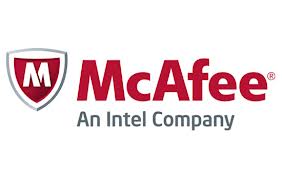 Jagdish Mahapatra, Managing Director, McAfee India and SAARC
Jagdish Mahapatra, Managing Director, McAfee India and SAARC
India, 19 December 2013 – Following are the mega trends that will dominate 2014’s security industry in India –
- Enterprise Mobility and BYOD: Organisations expect one single solution to address the overall BYOD challenge which is not practically feasible. BYOD needs to be looked at from different dimensions like Data Loss Prevention, Network access Control, Authentication system, internal intrusion prevention systems, internal firewalls, securing Wi-Fi etc. This demands that companies relook at the security architecture and rebuild it to fit BYOD needs.
- Real-Time visibility of threat trends: The volume of threats and the nature of hidden, stealthy malware that is designed to evade traditional protection counter measures will require every organization to have instant visibility across devices. Of critical importance will be the ability to query for data and make decisions on how to protect the network, and then make relevant changes in real time.
- Advanced Threat Defence in Security: To combat the problem of advanced malware, many organizations are relying on their legacy security products or using stand-alone malware products that are not integrated with the rest of the environment. Hence there is a need to adopt advanced threat defence solutions to respond to attacks faster and seamlessly move from analysis to protection and resolution.
- Data centre transformation- Data centres are the nerve centre of an organization making data centre security a top priority for most companies today. With the blurring of boundaries between physical, virtual and public/private clouds, organizations are on an evolutionary curve towards next-generation data centres. Resultantly they will face the reality of securing data that moves between server, storage, and networking resources (physical and virtual) of next-generation data centres.
- Internet of Things and embedded devices – The Internet of Things is permeating the marketplace, bringing physical objects together through remote accessibility across the Internet without the need for human intervention, using the same wireless networks and Internet Protocol (IP) that connects your computer to the Internet. According to Ericsson, there will be 50 billion IP-connected devices by 2020, up from 1 billion just a year ago. This phenomenon has exploded the threat scope for these devices with ATMs, point-of-sale (POS) terminals, kiosks, medical equipment, SCADA systems and other embedded devices being hacked in ever-increasing numbers. To work as intended, most of these devices include embedded sensors that make it very easy to track the movements of those devices and monitor interactions with them. In other words, embedded intelligent devices are now just as likely as PCs, servers or smartphones to be dragged into botnets or hijacked by cyber-attackers.
- Need for security connected– In the wake of a sophisticated threat landscape and newly emerged business models, security cannot be seen as an instrument to stop bad things from occurring but instead as an enabler for more efficient, effective, and agile business. This realisation is steadily coming into effect with the paradigm of security moving from mere device safety to protection of assets with increased awareness of risk management and the reputational cost. In the ensuing year, there will be greater consciousness for security to be approached from a combination of endpoint, network, and data-centric controls for discovery, prevention, detection, response, and audit rather than each of these elements in a siloed manner. This interlocked approach, ensures better intelligence exchange arming companies with situational awareness and real time for quick and strategic action.
- Mainstreaming of security amongst SMBs – Indian SMBs largely represent knowledge based businesses such as chartered accountants, law firms etc. They are likely to have money moving around through (wire transfers, vendor payments, and customer payments) and their knowledge intensive nature, makes them potentially vulnerable to cyber threats. Many smaller businesses often lack budget and expertise, and typically have liberal, rarely enforced policies for use of personal devices, in-office Wi-Fi access, installation of unauthorized apps, thereby exposing itself to huge threats. Next year, we will see SMBs get more mainstream in their adoption of comprehensive security.
McAfee, a wholly owned subsidiary of Intel Corporation (NASDAQ:INTC), empowers businesses, the public sector, and home users to safely experience the benefits of the Internet. The company delivers proactive and proven security solutions and services for systems, networks, and mobile devices around the world. With its Security Connected strategy, innovative approach to hardware-enhanced security, and unique Global Threat Intelligence network, McAfee is relentlessly focused on keeping its customers safe. http://www.mcafee.com

